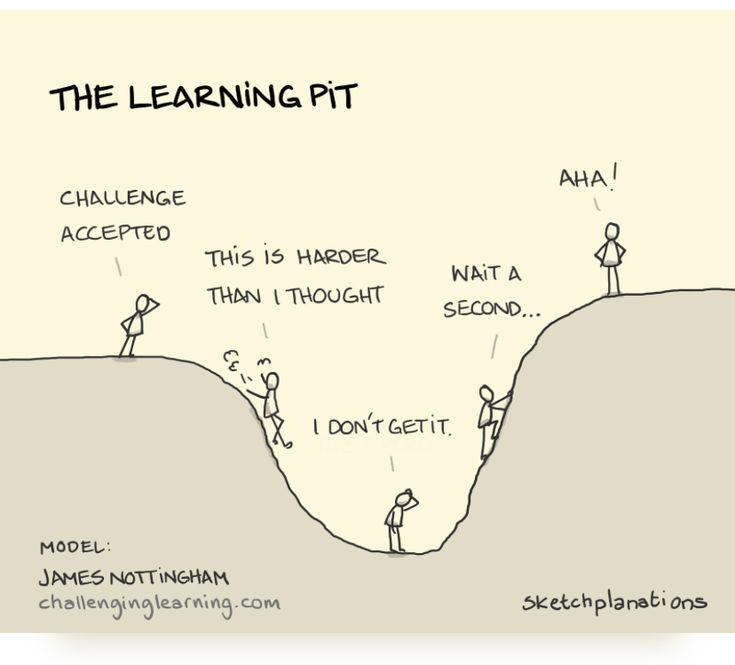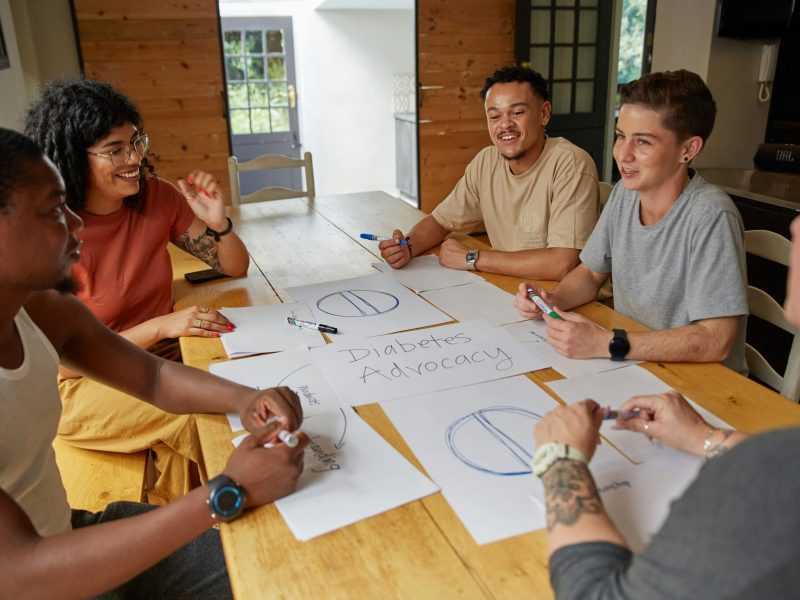James Nottingham’s Learning Pit metaphor resonates deeply with anyone who’s ever grappled with complex problems—whether in education, personal growth, or UX design.
The model visualizes the emotional and cognitive journey of learning: starting with confidence, descending into confusion, and climbing out with newfound clarity.
For UX designers, this struggle mirrors the iterative process of solving user problems, where ambiguity often precedes innovation.
In this post, we’ll dissect the stages of the Learning Pit, link it to UX principles, and explore how embracing this “pit” can lead to more empathetic, user-centered designs.
The Four Stages of the Learning Pit (and Their UX Parallels)
1. “Challenge Accepted”: The Optimism of Starting
Every UX project begins with enthusiasm. Stakeholders align on goals, user research is planned, and the team feels ready to conquer the problem. This phase mirrors the conscious competence stage of the Stages of Competence model—you know what needs to be done, but haven’t yet hit roadblocks.
UX Connection: Early ideation often feels smooth. Wireframes are drafted, user personas are defined, and the team believes they’ve cracked the user’s needs. But as any seasoned designer knows, this confidence is fleeting.
2. “This Is Harder Than I Thought”: The Descent Into Confusion
Reality hits during usability testing. Users struggle with navigation. Stakeholders question the workflow. Suddenly, the “perfect” design feels flawed. This stage aligns with Lev Vygotsky’s Zone of Proximal Development—the gap between what learners can do independently and what they can achieve with guidance.
UX Strategy: Lean into the confusion. Conduct heuristic evaluations, gather analytics, and iterate. Tools like Hotjar can reveal pain points through heatmaps, while user interviews provide qualitative insights.
3. “I Don’t Get It”: The Pit’s Lowest Point
Frustration peaks here. Designers might question their skills (“Is this the right career?”), much like learners facing a mental block. Carol Dweck’s Growth Mindset research is critical here: viewing challenges as opportunities to grow, not failures.
UX Tip: Encourage teams to adopt a prototype-driven mindset. Use rapid prototyping tools like Figma to test ideas quickly. Remember: Airbnb’s success emerged from countless iterations after early failures.
4. “Aha!”: Climbing Out With Mastery
The breakthrough moment arrives. Maybe a user test finally validates the flow, or a stakeholder greenlights the solution. This “Aha!” mirrors the unconscious competence stage—the design now feels intuitive.
UX Example: Spotify’s “Discover Weekly” feature wasn’t an overnight win. It emerged from years of tuning algorithms and understanding user behavior through A/B testing.
How the Learning Pit Relates to Other Models
- Growth Mindset (Carol Dweck): Persisting through the pit requires believing skills can be developed.
- Double Diamond (Design Council): The pit’s “confusion” phase aligns with the Discover and Define stages.
- Zone of Proximal Development (Vygotsky): Mentorship and collaboration help teams climb out.
Applying the Learning Pit to UX Processes
Step 1: Normalize the Struggle
Educate stakeholders about the pit. Share this animated video to explain why confusion is a natural step toward innovation.
Step 2: Iterate Relentlessly
Use tools like Miro for collaborative problem-solving. Break tasks into smaller experiments to avoid overwhelm.
Step 3: Celebrate “Pit Moments”
When a team member says, “I’m stuck,” reframe it as progress. Google’s Design Sprints thrive on this philosophy—time-boxed struggle leads to solutions.
Why UX Designers Need the Learning Pit
- Empathy Building: Struggling through the pit helps designers relate to users’ frustrations.
- Innovation Trigger: Constraints breed creativity (see Nielsen Norman Group).
- Resilience Training: Teams that endure the pit become adaptable—a must in agile environments.
Conclusion: Stay in the Pit—Your Users Need You To
The Learning Pit isn’t just a metaphor; it’s a roadmap for UX excellence. By embracing confusion, designers uncover deeper insights, build resilience, and create solutions that truly resonate. As James Nottingham says, “Clarity comes from curiosity.” So next time you’re in the pit, remember: the struggle is where magic happens.
Further Resources:


